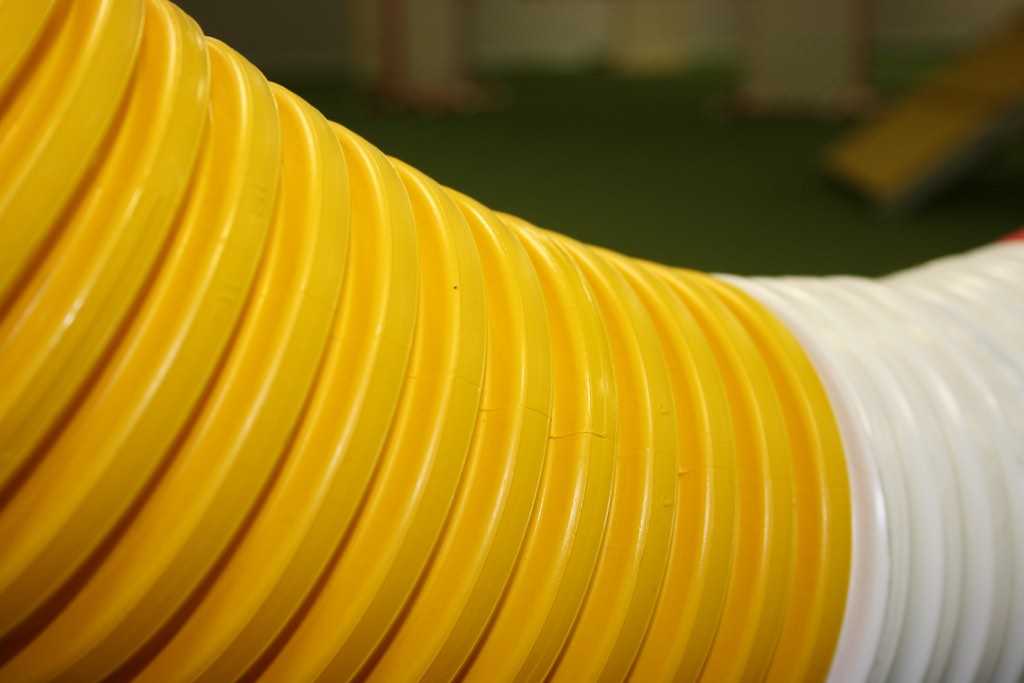If I Knew Then... Proactive Handling
07 Mar 2012
For today’s Dog Agility Blog Event Day: “If I knew then what I know now” I want to share the most important agility handling concept I know. It is independent of any “handling system”. I emphasize it in all my Seminars Steve's SeminarsThoughts On Choosing Seminar Presenters and in almost every class. If I knew it when I first started training and handling 15 years ago it would have made handling so much easier and I would have been more successful too. It is:
This concept is so simple and so powerful that I think it’s simplicity makes people overlook its importance.
So what does it mean?
If you watch inexperienced handlers you’ll see them handle in a very reactive manner; they are handling the dog as though only the upcoming obstacle matters, not thinking about the dog’s path through the sequence of obstacles. So many of them send the dog over a jump and then realize they need to turn the dog (or call it off an off course) after the dog lands. For the dog this type of handling turns a course into sequence of obstacles where the dog is continuously surprised by their handler. In the worst cases the dogs slow down to see what the handler is going to tell them next.
But the most successful handlers consider the dog’s path through multiple obstacles. These handlers cue the dog to turn before they commit to the jump; so the dog takes the jump already turning toward the next obstacle. Similarly, if the dog is to continue forward and not turn, the dog should be taking the jump knowing that no turn is required. The successful handler builds the dog’s confidence in their leadership.
Good handlers are not just concerned with giving timely direction; they let the dog know how much effort is needed. If you want the dog to turn over a jump and Wrap Jump Wrap Handling TipsJump Wrap Handling - With VideoJump Wrap/Wrap it then the dog needs to know that it should take the jump turning and with some amount of collection. The converse is also true, a dog turning gradually to the next obstacle can be cued to take the current jump turning and in full extension to the next obstacle.
To me it is all about being a proactive handler. Or, to use the well worn car driving analogy, being the navigator who lets the driver know to take the next exit with enough time to get into the exit lane instead of telling the driver after passing the exit. It isn’t micromanagement either, it is always letting the dog know where they are going and asking for the appropriate amount of collection when needed; otherwise letting the dog run.
So what is commiting/committed? To me a dog is committed to an obstacle when it will no longer not take the obstacle. Once committed few dogs can successfully adjust their direction (dog’s reactions to a late cue are a common cause of dropped bars). So if the dog isn’t taking the jump on a path to the next obstacle the handler is stuck adjusting the dog’s direction after the dog lands; getting a wider (often slower) turn or risking an off course.
You’ll notice I haven’t said anything about what Cues to use; it is up to each handler to train and understand how to combine their cues to give their dogs directional and effort information prior to commitment.
It also means that handlers who are looking to get the most speed out of their dogs will strive to keep their dogs in extension, running full out - using full strides, up until the dog gets to their commitment point. At the moment they arrive at their commitment point the handlers give their dogs the appropriate cues to communicate how much to turn and how much energy to exert (jumping collected/in extension). Running fast in extension until the “control” points where the dog is shifted into collection to turn gives the fastest times around the course.
My handling began improving once I started working on giving my dogs the direction and exertion information they needed earlier on course. If you watch video of Meeker you won’t say “wow he is really fast”; he isn’t a flashy running dog. But, when I’m giving him the information he needs prior to committing to a jump, you’ll see he is very efficient, doesn’t waste strides and we end up with smooth runs and quick times. Over time he is getting faster too. I think he is more confident in my leadership and doesn’t second guess where I’m leading him.
So I hope you’ll think about this concept and applying it to your handling. Once you start giving your dogs the information they need before they commit the two of you will be faster and smoother on course. I’m glad I know this now.
If you enjoyed this article won't you please:  Thanks!
Thanks!
